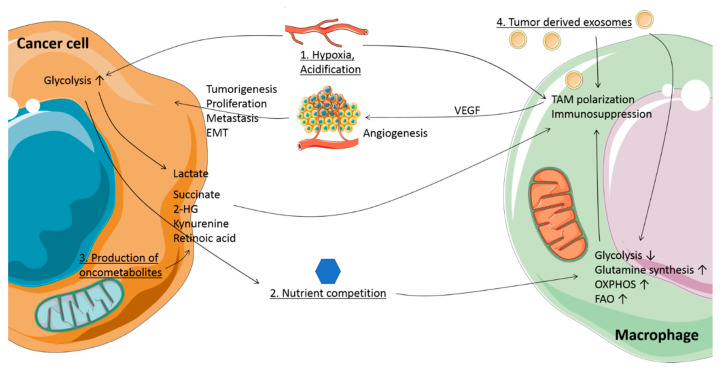Figure 1.
Metabolic conditions and crosstalk between cancer cells and macrophages in the tumor microenvironment (TME). 1. Hypoxia: the TME contains regions with reduced oxygen availability. Together with Warburg metabolism, this promotes lactate production in tumor cells by upregulation of glycolysis. Lactate is transported out of the cells and together with the concomitant acidification influences tumor-associated macrophage (TAM) phenotype. 2. Nutrient competition: presence of glucose and amino acids is limited due to the high metabolic rate of cancer cells, inducing metabolic changes in TAMs, and affecting their function. 3. Production of oncometabolites: mutations in tricarboxylic acid (TCA) cycle enzyme genes, as well as changes in metabolism, lead to accumulation of oncometabolites such as succinate, 2-hydroxyglutarate (2HG), lactate, kynurenine, and retinoic acid. When secreted, these oncometabolites support a pro-tumoral TAM phenotype and function. 4. Tumor-derived exosomes: tumors exhibit an increase in exosome release, which can carry microRNA, oncometabolites and metabolic enzymes, affecting macrophage function and metabolism. Together, these metabolic conditions and oncometabolites induce tumor-supporting TAMs, with functions such as promoting angiogenesis, metastasis, epithelial-to-mesenchymal transition (EMT), proliferation and immunosuppression.

